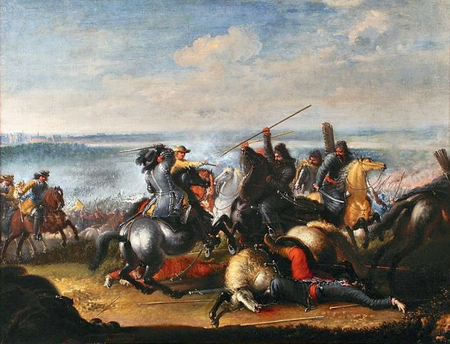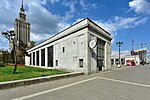Battle of Warsaw (1656)

The Battle of Warsaw (German: Schlacht von Warschau; Polish: Bitwa pod Warszawą; Swedish: Tredagarsslaget vid Warschau) took place near Warsaw on July 28–July 30 [O.S. July 18–20] 1656, between the armies of the Polish–Lithuanian Commonwealth and Sweden and Brandenburg. It was a major battle in the Second Northern War between Poland and Sweden in the period 1655–1660, also known as The Deluge. According to Hajo Holborn, it marked "the beginning of Prussian military history".In the battle, a smaller Swedish-Brandenburg force, but with the fire superiority of infantry and artillery gained victory over a Polish–Lithuanian force superior in numbers, though in the long term the victory achieved little. Polish–Lithuanian losses were insignificant, since the Polish noble levy promptly and unbroken retreated from the battlefield.
Excerpt from the Wikipedia article Battle of Warsaw (1656) (License: CC BY-SA 3.0, Authors, Images).Battle of Warsaw (1656)
Plac Defilad, Warsaw Śródmieście (Warsaw)
Geographical coordinates (GPS) Address Nearby Places Show on map
Geographical coordinates (GPS)
| Latitude | Longitude |
|---|---|
| N 52.2323 ° | E 21.0084 ° |
Address
Ja, zwykły szary człowiek... (Samopodpalenie Piotra Szczęsnego)
Plac Defilad
00-110 Warsaw, Śródmieście (Warsaw)
Masovian Voivodeship, Poland
Open on Google Maps










